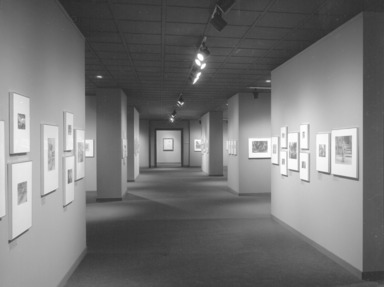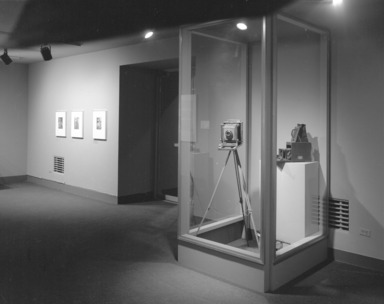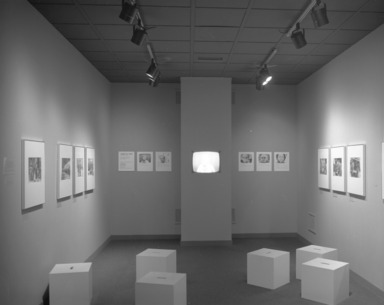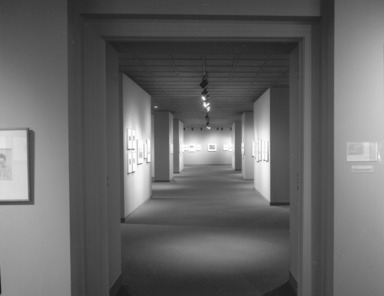

Lewis Hine: A Retrospective of the Photographer, March 12, 1977 through May 15, 1979 (Image: PHO_E1977i001.jpg Brooklyn Museum photograph, 1977)

Lewis Hine: A Retrospective of the Photographer, March 12, 1977 through May 15, 1979 (Image: PHO_E1977i002.jpg Brooklyn Museum photograph, 1977)

Lewis Hine: A Retrospective of the Photographer, March 12, 1977 through May 15, 1979 (Image: PHO_E1977i003.jpg Brooklyn Museum photograph, 1977)
Lewis Hine: A Retrospective of the Photographer
DATES March 12, 1977 through May 15, 1979
ORGANIZING DEPARTMENT
Prints, Drawings and Photographs
COLLECTIONS
Photography
-
February 25, 1980
It is significant that the first U.S. art exhibition to tour the People’s Republic of China should be a retrospective of the work of Lewis W. Hine whose photographs document the struggles of the worker and immigrant in America. Lewis W. Hine, 1874-1940: A Retrospective of the Photographer, organized by The Brooklyn Museum, will open in Beijing (Peking) on February 25, 1980. The exhibit will travel to Jinan (Chinan), Shanghai, and Guangzhou (Canton). An exchange exhibition of contemporary Chinese scroll paintings will be on view at The Brooklyn Museum March 8 through May 4.
Building on the warm relationship established when The Brooklyn Museum hosted the exhibition of Peasant Paintings from Huhsien County of the People’s Republic of China in 1977, TBM Board Chairman Robert Levinson and T’ang Hong of the Chinese Exhibition Agency negotiated the final arrangements for the Hine exhibition when Mr. Levinson was on a Museum-sponsored China tour this fall. “Not only does the Hine exhibition demonstrate the use of art to correct injustice,” maintains Mr. Levinson, “but its sensitive vision of working people should strike a responsive chord in the Chinese people.”
The exhibition was curated by Barbara Millstein, Consulting Curator of Photography and Architecture, and by Guest Curators Professor Walter Rosenblum and Dr. Naomi Rosenblum who will supervise the initial installation. They along with Mr. and Mrs. Levinson, Mr. R.J. Learsy, President of Agricultural and Industrial Chemicals, Inc., and Mrs. Learsy will represent the Museum at the opening celebration in Peking. Barbara Millstein and TBM Curator of Oriental Art, Robert Moes will oversee subsequent installations of the exhibit along its tour.
The exhibition traces Hine’s sensitive vision of individuals as they experienced the immigration process at Ellis Island, working-class life in a developing industrial America, the Great Depression. Whether he was photographing eight-year-olds working in a glass factory or a tired family seated on a bench at Ellis Island, Hine poigniantly captured the hope and dignity of people in difficult circumstances.
Hine’s photographs that exposed child labor abuses contributed to the passage of federal legislation that radically changed working conditions in America. Hine, however, was more than a social advocate of workers in New York City sweatshops, Pittsburgh steel mills, and Tennessee tobacco plantations. His understanding and empathy are reflected in images that are as beautiful as they are powerfully aware.
He was convinced that photography educated by sharpening perception, and argued that “in the last analysis, good photography is a question of art.” Hine also emphasized the practical values of camera work - working procedures, discipline and cooperation. His genius as a craftsman is particularly revealed in his Empire State Building construction photos where Hine and his large tripod-mounted 5x7 view camera with slides, flash pan, and powder were suspended from the hundredth floor.
The China tour has been made possible with the support of Pan American World Airways and Agricultural and Industrial Chemicals, Inc., New York. The Museum also acknowledges the assistance of the New York Council for the Humanities, Unitours, and the Hong Kong Tourist Association.
Brooklyn Museum Archives. Records of the Department of Public Information. Press releases, 1971 - 1988. 1980, 003-4.
View Original -
March 8, 1980
The exhibition Contemporary Paintings in the Traditional Manner from the People’s Republic of China demonstrates the continuing friendship and cultural exchange between the United States and the People’s Republic of China. On view at The Brooklyn Museum March 8 through May 4, 1980, the exhibition was organized by the China Exhibition Agency, Beijing, People’s Republic of China. In return, the first American art exhibition to be seen in China, Lewis W. Hine, 1874-1940: A Retrospective of the Photographer, is presently touring the People’s Republic of China through June 1. The Brooklyn Museum also hosted the first American showing of the Peasant Paintings from Huhsien County of the People’s Republic of China exhibition in 1977.
Although mainly by living artists, the fifty paintings in the Contemporary Paintings exhibition are all traditional in format (hanging scroll), subject matter (landscapes, figures, birds-and-flowers), technique (ink and color on paper or silk), and style (generally, the so-called literati style).
The force of tradition is very strong throughout the history of Chinese painting. Chinese artists learned to paint by copying the work of earlier artists until they had mastered various styles and were ready to develop individual styles of their own.
The Chinese have always valued the arts of calligraphy and painting. These are closely related; the same type of brush, ink,
and paper are used for both. Furthermore, since early times, Chinese paintings have often incorporated passages of calligraphy -- usually a poem composed by the artist himself, who takes into consideration the placement, proportions, and calligraphic style of the inscription in relation to the picture, as well as their mutual theme. The artist habitually signs the poem-picture, and stamps it with one or more of his seals.
The related arts of calligraphy and painting are uniquely important in China because a Chinese child literally grows up with a brush in his hand; children learn writing from an early age. This training involves the mastery of the most flexible and difficult -- but also the most varied and expressive -- of writing and drawing implements, the Chinese brush.
The press is invited to a special preview on Wednesday, March 5, 6-9 PM. Please call the Public Relations Department to arrange photography sessions. An illustrated checklist ($.25) is available.
Brooklyn Museum Archives. Records of the Department of Public Information. Press releases, 1971 - 1988. 1980, 042-43.
View Original

